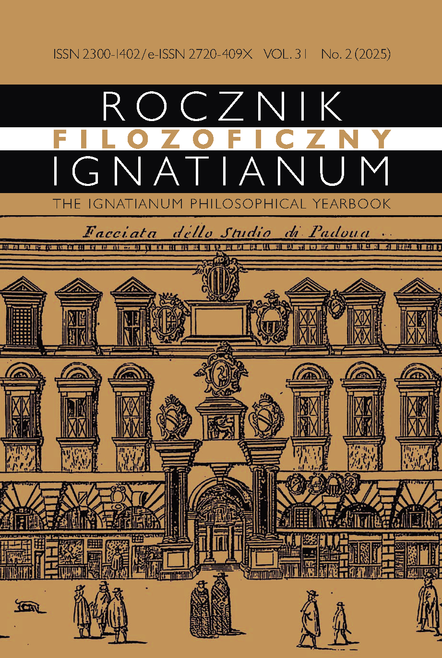The Arcadian Myth in Jan Kochanowski’s Saint John’s Eve Song About the Festive Night as a Synthesis of Cultural Heritage
Abstract
The Arcadian myth has always represented the concept of an ideal human life. This article shows that the Arcadian model unites many humanistic trends and traditions vividly manifested in idyllic writing. The Arcadia presented by Virgil, Theocritus, Sanazzaro, and Kochanowski showed a codified, universal system of values. This is clearly seen in Saint John’s Eve Song About the Festive Night. This series of poems deals with the relationship between the Arcadian space and Kochanowski’s work. This relationship significantly contributes to the myth of the common cultural heritage while showing the reinterpretation of the Arcadian vision in Old Polish literature. The topic of Arcadia relates to the locus amoenus and the relationship between classical pastoral poetics and Polish landowning culture, recorded in the native idyllic tradition. The most significant of the textual examples presented was Sobótka, which can be interpreted in various ways. In conclusion, the following discourses are included in the work: Christian, classicist, folk, pagan, and mythological which make us treat the Renaissance poet’s work as a synthesis of various humanistic ideas that guided by the University of Padua since its inception.
Literaturhinweise
Kochanowski Jan, Pieśni, ed. Ludwika Szczerbicka-Ślęk (Wrocław: Ossolineum, 1970).
Kochanowski Jan, Trifles, Songs and Saint John’s Eve Song, transl. Michael J. Mikoś (Lublin: Wydawnictwo KUL, 2018).
Sanazzaro Jacopo, Arcadia (Milano: La Società Tipografica de’ Classici Italiani, 1806).
Virgil, The eclogues, transl. Anthony S. Kline, https://www.poetryintranslation. com/PITBR/Latin/VirgilEclogues.php#anchor_Toc53323925 (accessed on 12.09.2022).
Chaudhuri Sukanta, Pastoral Poetry of the English Renaissance (Manchester: University Press, 2016).
Haywood Eric, Rinascimento e barocco. Roma, Napoli e altri viaggi Per Mauro de Nichilo. ed. Davide Canfora, Claudia Corfiati (Bari: Cacucci Editore, 2017).
Krzewińska Anna, Sielanka staropolska, jej początki, tradycje i główne kierunki rozwoju (Warszawa–Poznań–Toruń: PWN, 1979).
Michałowska Teresa, Słownik literatury staropolskiej (Wrocław–Warszawa–Kraków: Ossolineum, 1979).
Miechowita Maciej, Opis Sarmacji azjatyckiej i europejskiej, introd. Henryk Barycz, transl. Tadeusz Bieńkowski (Wrocław: Ossolineum, 1972).
Nowicka-Jeżowa Alina, Spotkania w labiryncie. Szkice o poezji Jana Kochanowskiego (Kraków: Polska Akademia Umiejętności, 2019).
Pelc Janusz, Kochanowski. Szczyt renesansu w literaturze polskiej (Warszawa: PWN, 2001).
Stroh Wilfried, Łacina umarła, niech żyje łacina! Mała historia wielkiego języka, transl. Aleksandra Arnd (Poznań: Wydawnictwo Poznańskiego Towarzystwa Przyjaciół Nauk, 2013).
Śnieżko Dariusz, Mit wieku złotego w literaturze polskiego renesansu. Wzory – warianty – zastosowania (Warszawa: Wydawnictwo Naukowe Semper, 1996).
Ziomek Jerzy, Renesans (Warszawa: PWN, 2012).
Ford Philip, Tylor Andrew, “Introduction: Neo-Latin and the Pastoral”, Canadian Review of Comparative Literature 1-2, vol. 33 (2006): 5–16.
Copyright (c) 2025 University Ignatianum in Cracow

Dieses Werk steht unter der Lizenz Creative Commons Namensnennung - Keine Bearbeitungen 4.0 International.
Rocznik przyjmuje do druku wyłącznie materiały, które nie wchodzą w żaden konflikt interesów, żaden konflikt z prawem autorskim itp. Redakcja prowadzi działania przeciw: plagiatom, ghostwriting1, guest/honorary authorship2 itp. Autor pracy zbiorowej, który jest pierwszy na liście, bierze na siebie odpowiedzialność i ma obowiązek przedstawić wkład wszystkich współautorów. Jeśli publikacja powstała dzięki dedykowanym środkom finansowym, należy ujawnić to np. w Podziękowaniu, przypisie itp. Ew. przedruki wymagają jawnego zgłoszenia i okazania odpowiedniego pozwolenia wydawniczego. Autorzy / Recenzenci nierzetelni narażają się na reakcję właściwą stosownym instytucjom.
______
1 Ma to miejsce, gdy osoba mająca istotny wkład jest pominięta na liście Autorów czy w Podziękowaniu.
2 Zachodzi, gdy na liście autorskiej pojawia się osoba mająca znikomy/żaden udział w pracy.





